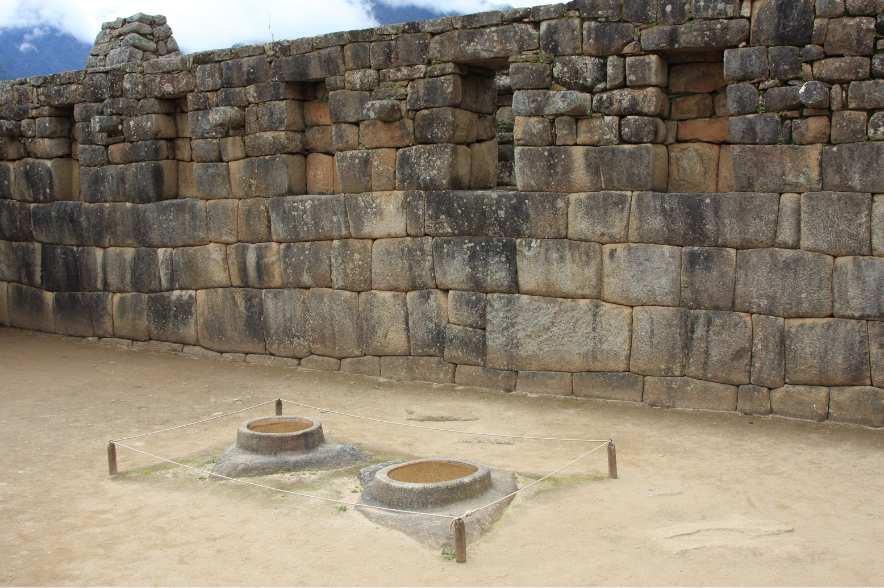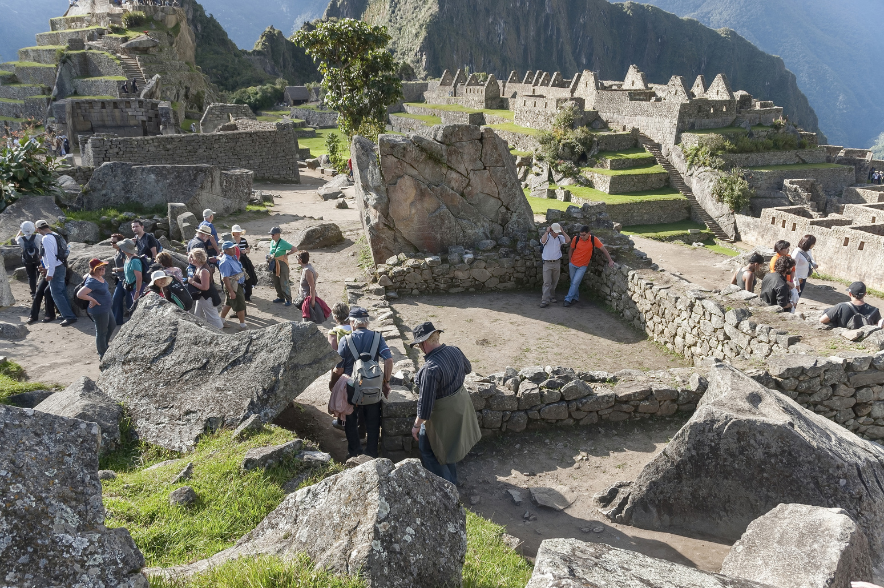There are five circuits to access the citadel of Machu Picchu and we should plan well which we decide to take. Here we would like to give you more information on Circuit 1 and all that you can discover on this route.
What kind of route does Circuit 1 provide?
This route offers the opportunity to explore both the higher and lower levels of the archaeological site within the space of about two hours, allowing you to discover a variety of important structures. Among these are the Foso Seco, or dry moat, the Mirador at the Temple of the Sun, the Quarry, the Water Mirrors, Pisonay Plaza and the Archaeological Reserve. The route takes about two hours.

Photo 1: Upper Platform
Additionally, it is on Circuit 1 that you can take the classic photo of Machu Picchu. You’ll notice it once you’re at the Guardhouse in the area of all the terraces. The best photo for your social networks!
Remember that you can only gain access to Circuit 1 with the Machu Picchu Solo ticket, also known as the Llaqta Machu Picchu entrance. More information is available on this link.
What attractions does Circuit 1 offer?
Main entrance
The Incas used a trapezoid design for this door to frame the view of the Huayna Picchu mountain, considered one of the more important deities of the citadel.

Photo 2: Main Door
The main entrance is the same used by all of the circuits, but from here on and depending on the circuit taken, the access is to different attractions and locations.
Dry Moat
This is our first stop after visiting the upper and lower platforms. This dry moat served to protect Machu Picchu, and it was a mechanism that fulfilled several functions:
- Water drainage
- Prevention of land erosion
- Division between the urban and agricultural areas

Photo 3: Dry Moat
Both Circuit 1 and Circuit 2 have access to this attraction. The map clearly shows it as a dividing line.
Temple of the Sun
Continuing on our route, we come to the Temple of the Sun, an enclosure built at the top of the citadel of finely hewn stone. It is believed to have been a religious building to worship the Sun. It is a circular building with niches, windows and an entry door.

Photo 4: Temple of the Sun
According to the remains, and before the Spanish invasion, it is believed to have been decorated with ornaments of gold and silver. Even today you can see the fissures that prove these precious metals were looted.
The Temple of the Sun is in the Hanan or religious section. The temple also served the following purposes:
- Astronomical observatory
- Tomb or Mausoleum. According to some chroniclers, the mummy of Inca Pachacutec was buried here, the ruler who ordered the building of Machu Picchu itself.
- As its name implies, the temple was used for religious ceremonies to rend homage and give offerings to the sun.
The Quarry
Also known as the granite chaos of Machu Picchu, the Quarry will be our third stop. It is an area where stones and blocks of granite were worked. Stones are scattered everywhere, leading us to understand that the citadel was abandoned when work was still being done.

Photo 5: The Quarry
It is located to the far left of the llaqta and is visible also from the Sacred Main Square. However, the plaza is not part of this circuit and can only be seen from Circuit 3 and Circuit 4. Both the Quarry and the Sacred Main Square can also be visited also in these two latter circuits, something to take into consideration.
The Water Mirrors
The Water Mirrors will be our fourth stop and consist of two circular containers hewn out of the granite floor, shaped like mortars. The enclosure is called “The Hall of the Mortars”, and it is located in the Temple of the Virgins of the Sun.

Photo 6: The Water Mirrors
Since this route is shorter, on Circuit 1 we arrive at this location directly from The Quarry. However, on the other circuits the route is longer before reaching this location.
The Water Mirrors can be visited on all of the routes!
Plaza Pisonay
The Pisonay tree, also known as the solitary tree, is our fifth stop and is located in the middle of the main square. The tree has beneficial properties and is held in high esteem in the villages where it is grown because it is said to have the power to transform the land, making it fertile and improving the crops.

Photo 7: Pisonay Main Square
Just as the Dry Moat, the Pisonay Main Square can only be seen on Circuits 1 and 2.
Archaeological Reserve
Lastly, we arrive at the Archaeological Reserve as the final stop, both for Circuit 1 and Circuit 2. It is located to the right of the llaqta, very close to Pisonay Main Square and almost in a direct line from the Water Mirrors.

Photo 8: Archaeological Reserve
These are the attractions you will enjoy along Circuit 1. It is obvious that this experience is much more than a simple archaeological route. It is a voyage back in time, in which each step connects us to the engineering and spirituality of a lost civilization.
Are you excited about what you can discover? If so, you cannot miss taking one our PeruRail trains to Machu Picchu to discover this impressive world wonder.